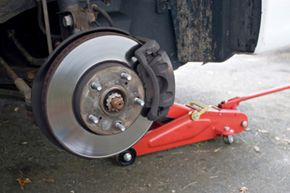Brakes are one of the most critical systems on a car. Connecting the parts are line fittings tying hydraulic brake lines to the mechanisms changing pedal force to braking force. While only a few in type, and of very basic construction, these fittings should be checked and tested as a routine part of annual car maintenance. Luckily, testing is simple and straightforward and only a few hand tools are needed.
In today's cars, with traction control, electronic stability programs, anti-lock brake systems, and a host of other new brake technology, fittings play an even more critical role. Most of the advanced brake additions and systems work from the base brake system and are tied in through more fittings. The base brake system is the one all cars have used since hydraulic brakes were introduced in the 1920 Duesenberg, and became part of Chrysler's mass-produced cars in 1924.
Advertisement
In essence the hydraulic base brake system uses hydraulic fluid to add mechanical advantage to the brake pedal. The fluid, existing in an enclosed circuit system, exerts force on hydraulic pistons, which in turn exert force on brake pads or shoes. The force is supplemented by a variety of power systems ranging from vacuum to hydraulic.
Newer introductions like ABS, traction control, even some advance cruise control and anti-roll-over systems, refine and control the base brake system to do their programmed bidding. But it's still just a base brake system doing all the work and it pays to pay attention to its needs -- including the fittings.
Ahead, we'll take a look at the tools used on the fittings, how to remove them, how to tell if they're corroded and how to test them to see if they're sound.



